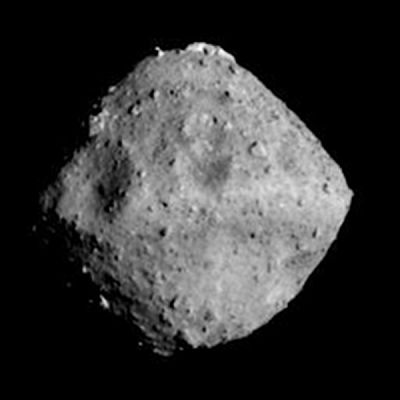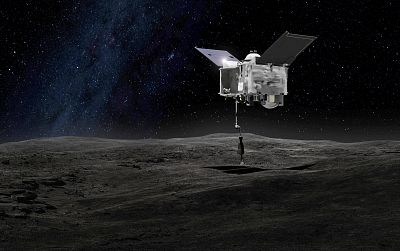Ryuga, whose orbit extends beyond that of Mars, looks like "a big space diamond."
After a journey of almost four years and 2 billion miles, a Japanese space probe is closing in on its target, a small asteroid named Ryugu, the Japan Aerospace Exploration Agency (JAXA) said on Sunday.
The unmanned craft, Hayabusa 2, is scheduled to rendezvous with Ryugu on Wednesday. Plans call for it to survey the half-mile-wide space rock using a suite of instruments, a lander and three tiny robotic rovers before returning to Earth with samples of Ryugu in November 2020.
If the mission succeeds, it will be only the second time that samples of an asteroid have been brought back to Earth. Other probes, including NASA's Galileo spacecraft, have visited asteroids, but Hayabusa 2's predecessor, Hayabusa (the name means "Peregrine falcon" in Japanese), is the only one to have returned to Earth with asteroid samples. It brought back bits of the Itokawa asteroidin 2010.
JAXA says this final leg of the mission will be a tricky one. "A tiny mistake can mean you miss the target entirely," Elizabeth Tasker, an associate professor of solar system science at the agency, told New Scientist. "The distances are equivalent to trying to hit a 6-centimeter target in Brazil from Japan."
In recent days, Hayabusa 2 has beamed back a series of dramatic photos of Ryugu, which circles the sun from a distance ranging from just within Earth's orbit to just outside Mars' orbit. The latest photo shows a rocky, cratered object against the blackness of space.
In a post on JAXA's website, Hayabusa 2 project manager Yuichi Tsuda likened the asteroid's strange, multifaceted shape to that of a crystal of the mineral fluorite or an abacus bead. NASA, which designated a set of the new photos its "astronomy picture of the day" on Monday, said Ryugu looked like "a big space diamond."
Hayabusa 2, which launched into space on Dec. 3, 2014, isn't the only space probe now en route to an asteroid. NASA's OSIRIS-REx probe launched on Sept. 8, 2016, and is scheduled to reach its target, the asteroid Bennu, in December. Plans call for OSIRIS-REx to return samples to Earth in 2023.
"The two missions are very similar," Paul Chodas, manager of the Center for Near Earth Object Studies at NASA's Jet Propulsion Laboratory in Pasadena, California, told NBC News MACH in an email. "Scientists will be interested to see whether the composition of Bennu differs in any way from that of Ryugu."
Carbon-containing asteroids like Ryugu have attracted interest in part because they're thought to harbor water-bearing minerals that may hold clues about the origin and evolution of our solar system. What's more, Chodas said, "it is possible that we may someday extract water or oxygen from asteroids like Ryugu, which means they could be used as refueling stops for missions on the way to Mars."
Ryugu, which means "dragon's palace" in Japanese, was discovered in 1999 and named in 2015.
NASA says no known asteroid poses a significant threat of impact with Earth over the next century.













